I don’t know whose idea this Dual-Motor XC40 Pure Electric was but … I want to buy them a drink.
This thing is equal parts practical and equal parts bonkers, wrapped up in a nice green bow.
Volvo has produced a number of economical plug-in hybrid vehicles in recent years – the likes of the XC90 PHEV and the XC40 Recharge PHEV, for instance. But this is the first all-electric vehicle that the Swedish brand has brought to market.
The XC40 Recharge Pure Electric has a price tag of $76,990 before on-road costs and has a range of 418km.
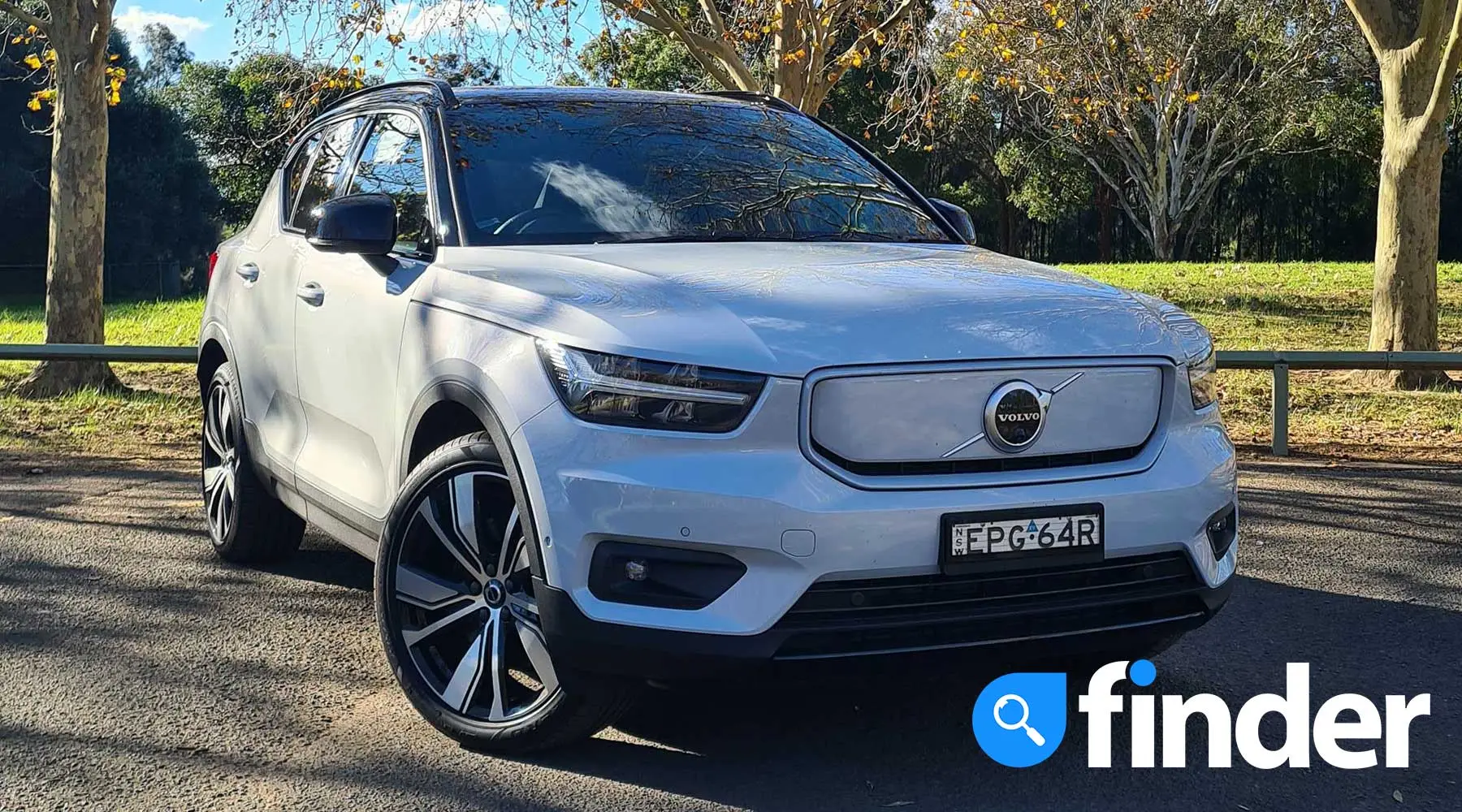
What’s the XC40 Pure Electric like inside?
Before you hop in the Volvo, download the app.
Syncing the car with the Volvo App will allow you to do things like check that you locked it, check how much charge it has and also – and the main reason for this rambling – turn on the climate control. You can do this from the comfort of your home, 10 minutes before you want to drive, which is pure joy (jumping on leather seats first thing on a cold winter morning just isn’t fun).
There is also no pressing of a start button or turning a key – it is simply on once you jump in. And if you are lending it to your kid, say they are a P-plater, there is a “care key” (read safety key) that allows you to set things like the maximum speed.
Once inside the now warm XC40, you can’t differentiate it from any other Volvo really. There are none of those overly futuristic features that some brands have included in their electric models.
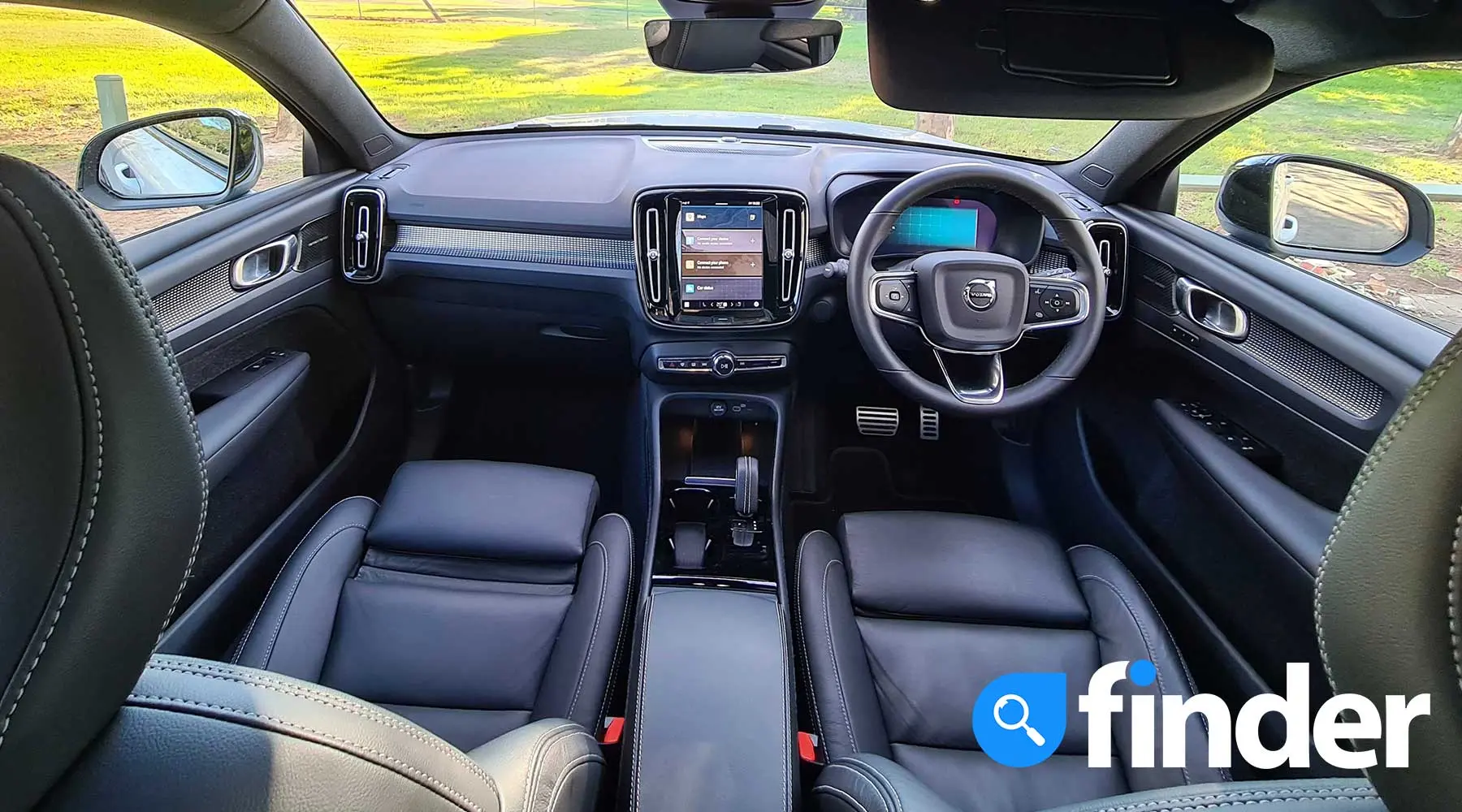
This is good, because Volvo knows how to create a comfortable and functional environment.
There is the standard 9-inch vertical touchscreen, which in the Pure Electric gets the new Android operating system. That means that Android Auto can’t be used, but by utilising Google Maps and the ability to download apps like Spotify directly to the system, you don’t really need it.
As always, Volvo keeps the physical buttons to a minimum, choosing to have functions like air-conditioning and the heated seating and steering wheel controlled from the screen.
A new 12.3-inch driver's display also integrates with the system and uses the Google Maps interface as well. It's a minor difference to the previous maps Volvo used, but for me it is a significant improvement.
It was hooked up to an optional 13-speaker Harmon Kardon sound system that gets the P-plater favourite thrown in too – a subwoofer.
Among other features upfront, there are 2 USB-C charging points, 2 cup holders and some door storage for odds and ends.
Some notes on seating:
- Seats throughout the cabin are wrapped in leather, with the front 2 being electronically adjustable. There is also a leg extender for those with longer limbs.
- The seats appear to be rather thin in design and may have you questioning comfort, but there is nothing to worry about there.
- The 2 outboard seats get seat heaters and there are 2 USB-C charging points.
- Second row seats also fold in a 60:40 fashion to open up the bootspace to 1,295 litres of space. Without them folded, you have 419 litres at your disposal.
- Seating in the back is comfortable and there is a decent amount of leg room. Impressively, headroom isn’t impacted by the addition of the sunroof which is a big plus.
As I sat there though, I couldn’t help but notice that the rear windows are a touch small and they sit in front of you, tapering toward the roof. It makes you feel almost like you’ve sunk back into the car. Or maybe it is a byproduct of all that torque the XC40 Pure Electric has to offer?
There is a little bit of storage in the door bins – less than I expected, but you can fit some odds and ends in there, and more importantly, snacks.
What’s the XC40 Pure Electric like to drive?
I’m going to jump to the point on why I want to buy the person behind the XC40 Pure Electric a drink.
It’s freaking fast. I don’t know who needs this much power in a family SUV of this size, but I feel like we’d be friends.
It is powered by the same Dual-Motor set-up as the Polestar 2, so it produces 300kw and 450Nm. For reference, that is more torque than a Lamborghini Hurucan.
In a family SUV!? Brilliant.
A 78kWh battery stores the electrons and will keep the wheels turning for roughly 418km. That figure seems about right. We charged it twice and covered over 800km during our time with it.
Over those 800+ kilometres we found the ride to be comfortable. It wasn’t as soft and forgiving as you may have thought, but you wouldn’t be unhappy driving it daily.
Out on twisty highways you feel the XC40 Pure Electric’s low centre of gravity, which is thanks to its floor-mounted battery. It feels planted and helps to reduce the amount of roll that you tend to get with SUVs.
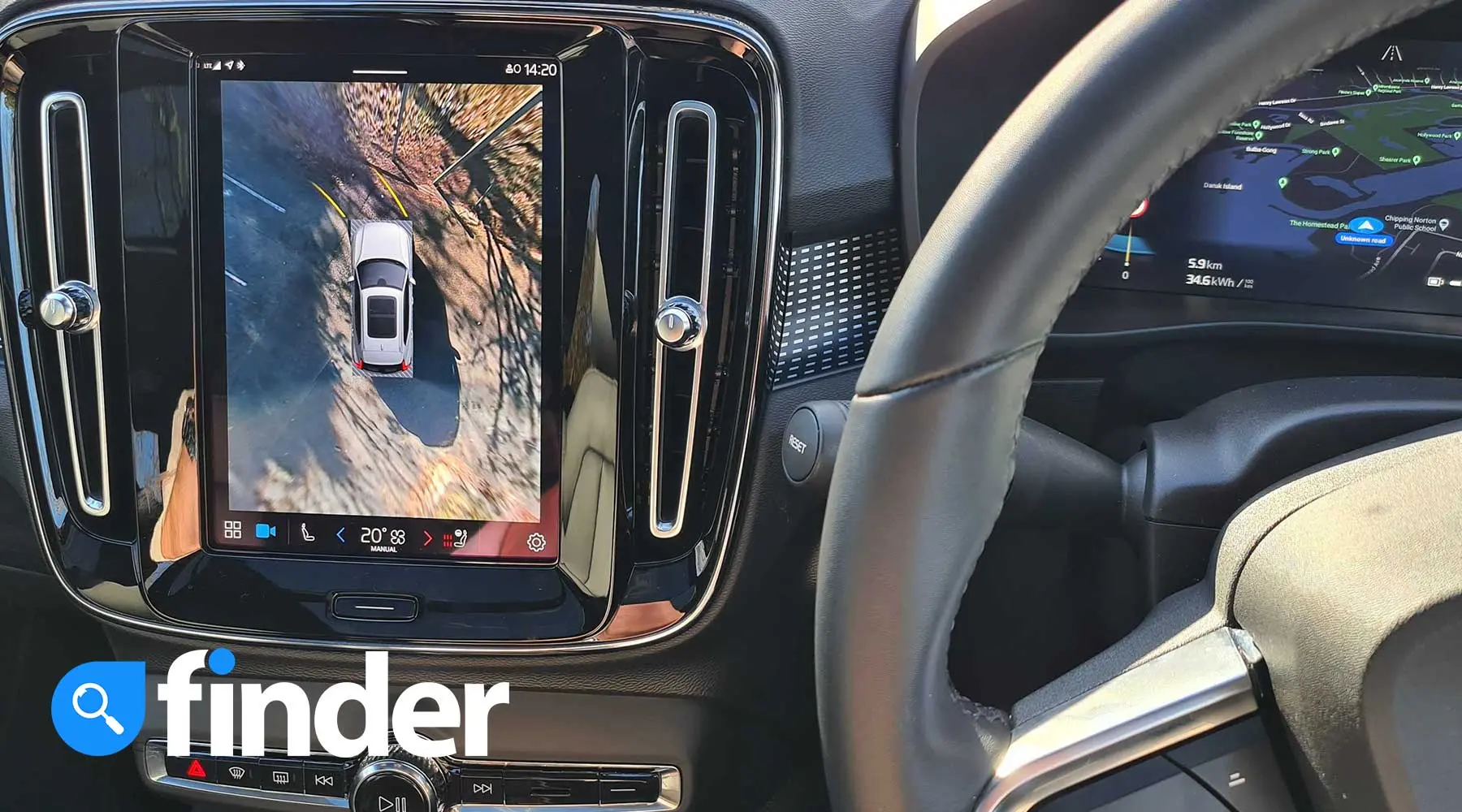
Steering is sharp and responsive when you don’t have the adaptive cruise control on. The cruise functionality works a charm but we found ourselves going in to the Android system and turning off the pilot assist.
At times it did feel like it was a battle for control of the vehicle.
What we didn’t find ourselves turning off was the one-pedal driving. This didn’t take long to get used to and you find yourself being much more mindful and smoother with your driving, while also topping up the battery.
There aren’t different levels of regenerative braking, it is simply on or off in the new Android infotainment system.
A time will come when you do need to top the battery up via cable though and on a fast charger you’re looking at about 28 minutes to get to 80% while at home it will take much longer. We had it on charge for a day and a bit, adding roughly 60% charge from a basic wall socket.
It might not sound super fast, but for day-to-day driving and the average Australian commute, you won’t run out of charge.
Everyone knows Volvos are the safest cars on the road. This XC40 Pure Electric for instance has airbags everywhere including front, side, curtain and driver’s knee airbags.
The issue here though is that they need to go somewhere and this has contributed to a rather chunky B-pillar.
It doesn’t completely block you from checking your blindspot, but you do need to turn yourself that little bit extra to get a good sighting.
Thankfully the person at Volvo who was in charge of putting through the order for the test vehicle ticked the box for the Harmon Kardon sound system. On certain stretches of road, there was a bit of road noise and the quality system managed to drown it out.
How safe is the Volvo XC40 Recharge Pure Electric?
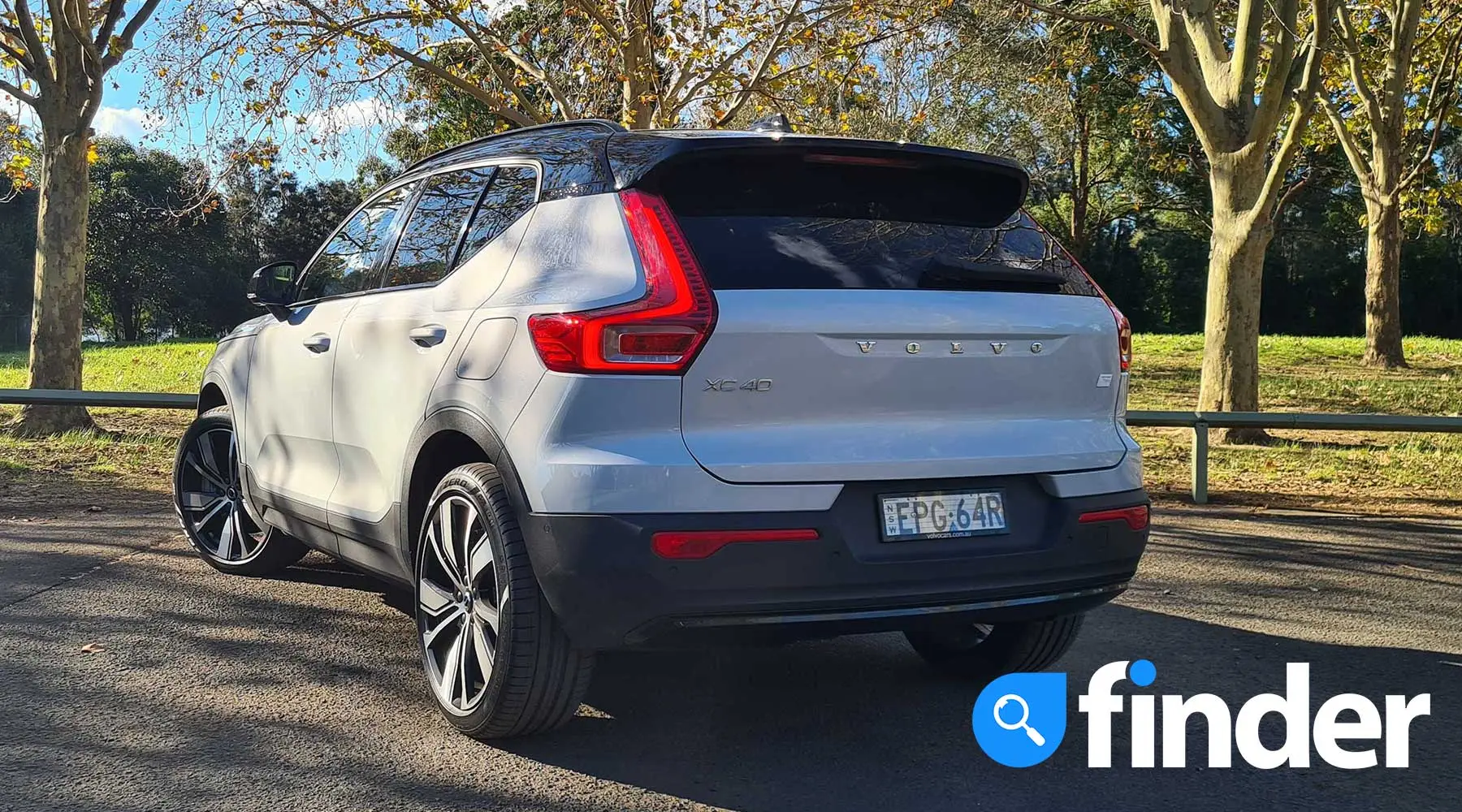
We’ve already touched on the airbags and the pilot assist, but there are a number of other active safety features that help to keep you on the straight and narrow.
- Autonomous emergency braking (AEB) with vulnerable road user detection
- Lane-keep assist
- Lane departure warning
- Blind-spot monitoring
- Rear cross-traffic alert
- Speed limit detection
- Reversing camera with front and rear parking sensors
After sales
Each 2022 XC40 Pure Electric comes with a 3-year 100,000km servicing as well as a 5-year unlimited kilometre warranty.
You also get 8 years of roadside assistance thrown in for good measure.
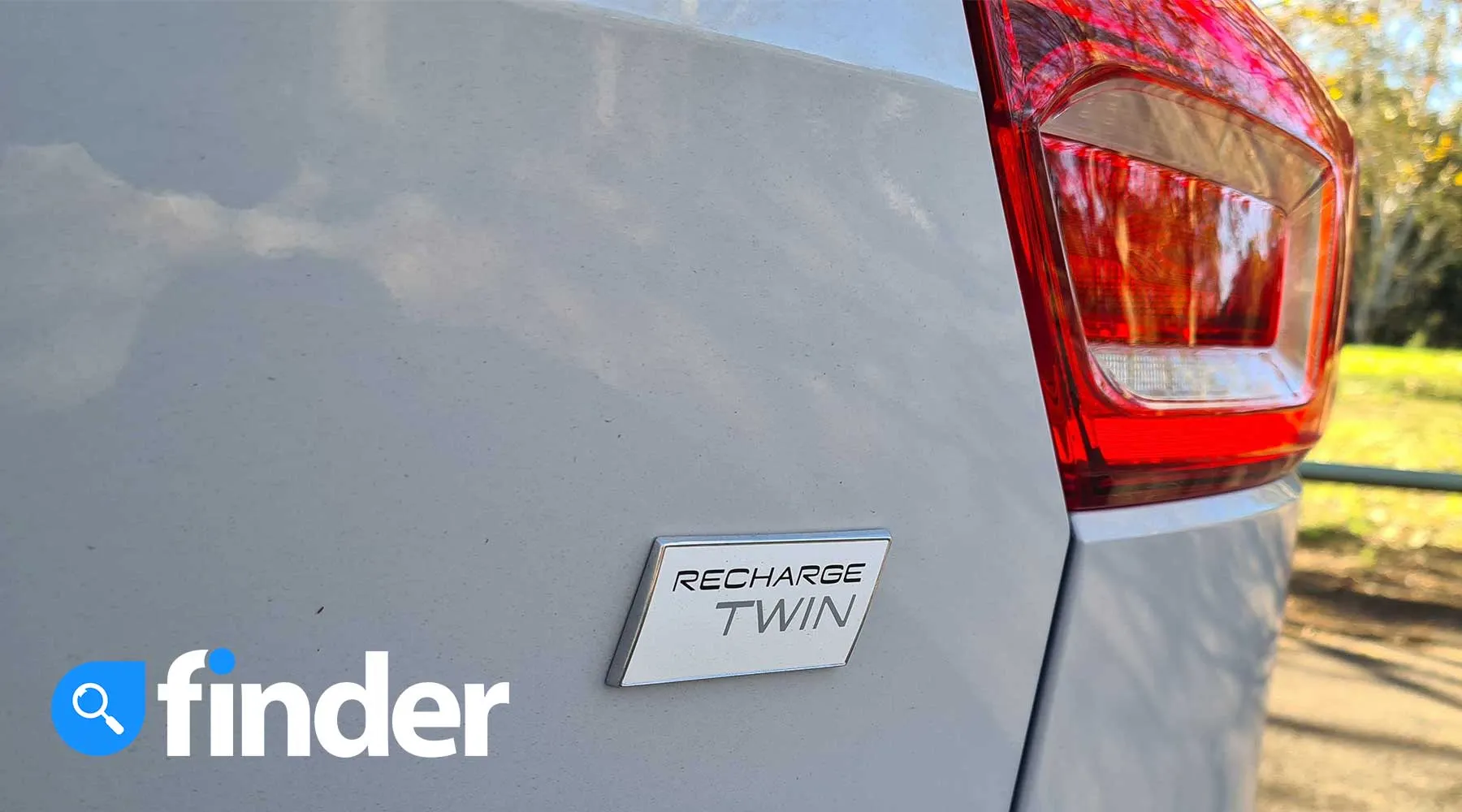
The verdict
The 2022 XC40 Pure Electric is a good car that has launched into an arena where there is much more competition. At this price point, it is jousting with the likes of the new and futuristic Hyundai Ioniq 5 which is priced from $75,900 for the AWD version, or the Mercedes-Benz EQA250 which has a price tag of $76,800.
You could even pick up a Polestar 2 long-range single motor, which shares a lot of similarities with the XC40 from $74,057 driveaway – albeit you won’t get this beastly dual-motor set-up, but will get a bit more range.
With all that said, I think the XC40 Pure Electric makes a strong case for itself in amongst these vehicles. It is practical, well appointed, has plenty of power but it also retains that safety focus that Volvo always brings to the table.
If you are looking at an electric SUV, you should test drive the XC40 Pure Electric. At the time of writing there’s a 6-month wait, but that could be shortened as Volvo has asked for more product in Australia, and it has a single motor variant due to land in the next few months. Watch this space!
Looking at a new EV? Check out our other electric car reviews and compare vehicles side-by-side. You might be surprised how much you could save by comparing car loans and car insurance.
More guides on Finder Shopping
-
Hyundai Ioniq 5 N Review
The future’s electric – and it wants to burn rubber
-
2025 Genesis G70 Review
It's faster than a BMW 3 Series, more unique than a Mercedes C-Class and loaded with features that make it feel every bit as premium.
-
Volkswagen Golf Mk8.5: More tech, more power, more excuses to upgrade?
The VW Golf is back - and it's got more of everything.
-
Sharper, smarter and better value: The 2025 Skoda Octavia RS lands in Australia
Skoda refines its family-friendly performance car with more features, more power and a competitive price.
-
2024 Peugeot E-Expert Van Review
Peugeot have made a van that whispers while it works.
-
2024 Toyota GR Corolla review
Toyota gave a Corolla muscles and a megaphone and it’s glorious.
-
2024 Jeep Wrangler Review
Born for the trail, adapted for the tarmac
-
SUV reviews
Let us assist you in picking your next SUV.
-
Best small cars
There are dozens of different makes and models to choose from and then about five different trim levels on average, per carmaker. This guide will help you cut through the sales banter.
-
Electric Car Reviews 2025
Which electric car should you buy in 2021? Find out with our complete EV guide.
